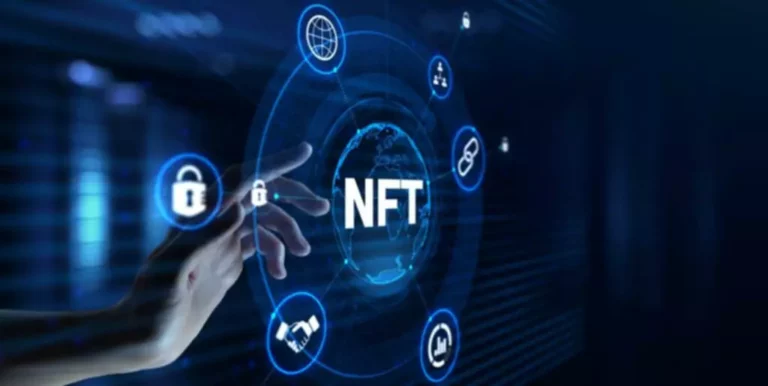Decentralized Applications dApps: Examples, Advantages, and Disadvantages
The front-end is also called client-side and is what users see when they interact with a website. Simultaneously, the back-end or the server-side is the application’s data access layer, representing the behind-the-curtains mechanism that gives the website its functionality. In addition to enhancing security, DApps also have the potential to greatly reduce costs and increase efficiency in various industries.
While decentralized apps saw a massive resurgence in popularity only after the Ethereum network went live, it’s important to understand that dapps don’t necessarily need to run on top of blockchains. Decentralized applications (dApps) have many advantages over traditional apps. This is because dApps are open source https://www.xcritical.in/ and use blockchain technology. However, dApps also have many disadvantages because they are very new. Until these disadvantages go away, dApps will probably not be able to replace traditional apps. Because DApps are built on a decentralized blockchain network, they are not controlled by a single entity.

Scaffold-ETH – Quickly experiment with Solidity using a frontend that adapts to your smart contract. Because more input can be offered, and the entire ecosystem can be more adaptable, progress faster, and evolve more safely. An analogous way to think about this is to picture web applications as cars. Dive in for free with a 10-day trial of the O’Reilly learning platform—then explore all the other resources our members count on to build skills and solve problems every day.

Users can also check client crypto wallet spending against known-risk indicators and comply with anti-money laundering regulations using the service. Dapps are still in the early stages just like mobile applications in 2010. Dapps definitely change the way we use the internet and obviously big corporations cannot continue what they do best. We have centralized exchanges like Binance and Coinbase where we can trade cryptocurrencies, Uniswap is a decentralized exchange(DEX), where you can buy cryptocurrencies with ETH.
DApps eliminate the need for many intermediaries, reducing fees and increasing efficiency. Transactions on a blockchain are publicly recorded and can be verified by anyone. This transparency reduces the risk of fraud and corruption, particularly in sectors such as finance and supply chain management.
- EVM takes care of the functioning of the dapps using the computing power of the nodes/miners.
- In the peer-to-peer network, everything that a centralized server usually do is distributed across all the nodes of the network, users can directly participate in the applications.
- In fact, many dApps are created on Ethereum using smart contract codes integral to the nature of decentralization.
- Perhaps the most notable benefit is the increased security and immutability that DApps offer due to their decentralized nature.
Constant syncing of all users and their devices to the centralized cloud can also lead to increased demands for bandwidth, imposing undue burdens on network infrastructure. To introduce dapps, we need to introduce smart contracts – a dapp’s backend for lack of a better term. In this article, we will explore the benefits and drawbacks of using DApps. We will start by examining the advantages that DApps offer, such as improved security, lack of central control, and increased accessibility.
In this article, we’ll explore the pros and cons of decentralized applications. A blockchain or peer-to-peer network of computers is used to run a decentralized app. Instead of relying on a central authority, it allows users to conduct transactions directly with one another. The user of a dApp will pay a cryptocurrency fee to the developer to download and use the program’s source code. A smart contract is a type of source code that allows users to complete transactions without revealing personal information. Decentralization means that the system does not
rely on centralized servers or data centers, so there
can be no single point of failure.
Because dApps are decentralized and often complex, they sometimes require significant computations. There are some concerns about the potential for network overload and congestion, although ongoing advancements in network technologies may mitigate this. Furthermore, the wide adoption of dApps will require developers to create end-user experiences that successfully compete with established, what is a dApp traditional centralized applications. Additionally, it can be challenging to modify code and data published to the blockchain so dApps are difficult to update or enhance. Many of the advantages of dApps center around the program’s ability to safeguard user privacy. With decentralized apps, users do not need to submit their personal information to use the function the app provides.
The future of decentralized applications is undoubtedly bright—every imaginable metric points to it. The idea of yield-farming dapps is to automate the process of yield farming, which in simple terms means stacking or locking up capital in various DeFi protocols in return for rewards. These dapps offer a hands-free approach to crypto investing and benefit users by allowing them to socialize the gas (transaction) costs.
This means that no single entity can control or shut down the application, ensuring freedom of expression and access to information. The application software for a centralized app resides on one or more servers controlled by the owner. As a user, you’ll interact with the app by downloading a copy of the app and then sending and receiving data back and forth from the company’s server.

The term decentralized triggers the idea of not having any central component. For example, the operation will have multiple users but not one single controller, and all the users can control their operation by themselves. Some popular blockchains, like Ethereum, have faced scalability issues, leading to slow transaction times and high fees during network congestion. For example, BitTorrent, Tor, and Popcorn Time are applications that run on computers that are part of a P2P network, which allows multiple participants to consume content, feed, or seed content. Smart contracts are blockchain building blocks that process data from external sensors or events and assist the blockchain in managing the state of all network actors.
PhantaBear NFT collection recorded a trading volume of 18,912 ETH($61 million) in the last week alone. Cryptopunks and Bored Ape Yacht Club are the most traded NFT collection on Opensea till date. To make any transaction on the Dapp, the browser prompts a window for you to accept or decline the transaction. The various platforms differ in some areas but are, for the most part, similar. Etherflow – FOSS tool for Ethereum developers to test their node, and compose & debug RPC calls from the browser.
The most popular dapps in this category are Yearn Finance, Harvest Finance, Pickle Finance, and Set Protocol. Another disadvantage of dApps is that they often have less functionality than traditional apps. This is because most dApps are still in their early stages of development and have not yet been fully fleshed out. DApps are one of the most common ways blockchain technology is being used.

